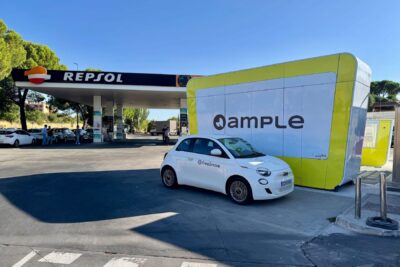GM Defense to supply battery storage for military platforms
The UTA PPEL (Pulsed Power and Energy Laboratory) “will evaluate the technology to understand current capabilities of commercial automotive batteries under dynamic discharge and charge scenarios,” General Motors explains. It will look at the batteries’ performance when used for high-power operations and provide “design considerations.”
GM points out that its Ultium Platform can use different cell chemistries and cell form factors, meaning that it is adaptable to the scenario where energy storage is needed. It is also scalable. “The Ultium Platform can deliver power, range and scale beyond any previous GM hybrid or extended range EV technology,” the carmaker says.
“The Department of Defense can benefit from billions of dollars in GM investments to develop and manufacture transformative battery technologies,” says Steve duMont, president of GM Defense. “These technologies offer significant potential to enhance operational capability, whether at the tactical edge or on installations throughout the world. GM Defense welcomes the opportunity to support this important project and to help transition our global defense and government customers.”
“We are excited to work with GM Defense to test the Ultium Platform to determine its potential for use in future warfighting applications. PPEL has a long relationship with the DoD and the Office of Naval Research for testing the limits of batteries used in high power applications, and we are in a unique position to evaluate this technology and make recommendations for future use cases,” said David Wetz, a professor of electrical engineering at UTA and director of the PPEL.
The University of Texas at Arlington project is called ‘Evaluation of Electric Vehicle Batteries to Enable Directed Energy’ (EEVBEDE). It is also supported by the Naval Surface Warfare Center Philadelphia Division (NSWCPD), and is funded by the Operational Energy Innovation Office of the US Department of Defense through its Operational Energy Capability Improvement Fund (OECIF).





0 Comments